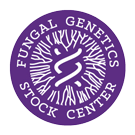Strain: Neurospora crassa
FGSC #2078
Reporting Genes: ad-6;ws-1
Species: crassa
Allele: RP102;RP99
Alternate Strain Number: RP102
Mutagen: UV
Depositor: RLP
Linkage Group: IVR;VIR
Mating Type: A
Genetic Background: M
ref1: Wang et al. Neurospora NL 18:16-17 1971, https://doi.org/10.4148/1941-4765.1899
Genes
